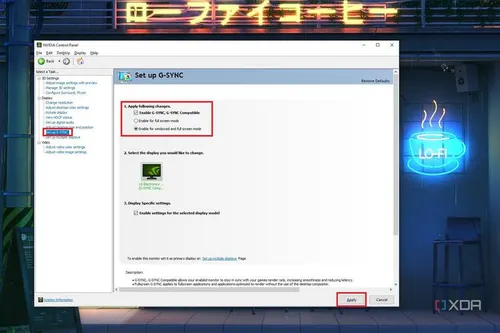In the fast-paced realm of online gaming and digital applications, performance optimization becomes a crucial factor for enhancing user experience. Many users often wonder how to optimize u888 settings for better performance, aiming to reduce lag, improve responsiveness, and maximize device efficiency. Whether you’re a casual gamer or a professional seeking that competitive edge, understanding the nuances behind optimizing these settings can significantly elevate your gameplay. This guide offers comprehensive insights into how to use u888 settings effectively, examples to enhance your understanding, and pragmatic advice to implement these tips seamlessly.
Understanding u888 Settings – The Foundation of Optimization
Before diving into the specifics of how to optimize u888 settings for better performance, it’s vital to grasp what these settings entail and their impact on your device. u888 settings typically refer to configuration parameters that govern the performance of gaming or application environments, affecting aspects like graphics, processing power, and network throughput.
Optimizing these settings requires a strategic approach, aligning hardware capabilities with desired performance outcomes. In this section, we’ll explore the fundamentals of u888 settings and why they matter.
The Role of u888 Settings in Gaming Performance
u888 settings often control elements such as rendering quality, frame rate caps, and network latencies. These parameters directly influence how smoothly a game operates and how responsive it feels during intense gameplay moments. High-quality graphics settings, for example, can enhance visual appeal but often come at the expense of reduced frame rates if hardware isn’t capable.
Understanding the delicate balance between visual quality and performance is crucial. This balance determines whether how to optimize u888 settings for better performance lies in customizing these parameters to suit the individual hardware and game requirements.
Insights & Personal Analysis:
Optimizing begins with awareness—knowing your device’s limits and your gameplay priorities. Some players prefer crisp visuals over higher frame rates, while others thrive on fluid responsiveness regardless of graphics. Learning how to use u888 settings wisely involves knowing when to push for quality and when to dial back for smoother play.
The Impact of Hardware Specifications
Hardware specifications such as RAM, GPU, CPU, and network bandwidth directly influence how to optimize u888 settings for better performance. For example, a GPU with limited VRAM may struggle with high graphics settings, leading to stuttering or frame drops.
Adjustments should be based on matching settings to hardware capabilities. Upgrading hardware might sometimes be necessary for desired performance levels, but in many cases, precise configuration adjustments can vastly improve efficiency without hardware investments.
Best Practices for Fine-Tuning u888 Settings
Fine-tuning involves iterative testing and adjusting. Start with default settings, then gradually tweak specific parameters while monitoring performance. Use in-game tools or third-party software to measure frame rates and latency, ensuring adjustments are beneficial.
The key is to prioritize settings that enhance responsiveness, such as reducing input lag and stabilizing frame rates. Visual fidelity can be sacrificed slightly if it means gaining smoother gameplay and quicker reactions.
Your personal insight: The process of optimization is akin to tuning a musical instrument—small adjustments can make a significant difference. Always test after each change, and prioritize changes that enhance your specific experience rather than following generic recommendations.
Customizing Graphics and Processing Settings for Optimal Gameplay
One of the core aspects of how to optimize u888 settings for better performance is customizing graphics and processing parameters to suit your gameplay style and hardware. These adjustments impact visual clarity, processing load, and overall responsiveness.
In this section, you’ll discover how to tweak these settings effectively with practical examples and strategic advice.
Adjusting Graphics Quality – Striking a Balance
Graphics settings influence how detailed and immersive your gameplay appears. High settings appeal visually but demand more from your GPU and CPU, often resulting in lower frame rates. Conversely, lowering graphics quality can significantly improve performance, especially on devices with limited resources.
For example, reducing shadow quality, turning off anti-aliasing, and decreasing texture quality are common tactics to enhance fluidity. The goal is to find a sweet spot where visual quality is acceptable without compromising game responsiveness.
Example Scenario: Suppose you’re playing an FPS game on a mid-range laptop. Increasing texture detail may cause lag; however, reducing shadows and disabling motion blur can restore smoothness. The key to how to optimize u888 settings for better performance lies in understanding which visual elements impact performance most and adjusting them accordingly.
Configuring Frame Rate and Resolution
Frame rate caps and resolution settings are pivotal in performance tuning. Higher frame rates (e.g., 60 fps or above) deliver smoother gameplay but can overburden hardware. Lowering resolution reduces the load, resulting in increased frame rates but at the cost of visual sharpness.
To optimize, start by setting your target frame rate at the highest your hardware comfortably supports. If lag persists, lower resolution or enable dynamic resolution scaling, which adjusts the resolution based on real-time performance metrics.
Practical tip: Use in-game performance monitors to observe the impact of each setting change. Some players prefer achieving consistent frame rates over having beautiful but inconsistent visuals.
Leveraging System Resources Efficiently
Ensuring your gaming environment uses system resources effectively is essential. Close background applications that consume CPU or memory, update graphics drivers regularly, and disable unnecessary system animations to free up bandwidth.
Advice for optimal settings configuration: Create custom profiles for different game types—prioritize visual fidelity for casual play and performance for competitive modes. This adaptive approach ensures each session is optimized without unnecessary compromises.
Network Optimization and Its Role in Performance Enhancement
Aside from graphics and hardware, network stability is a critical factor when learning how to optimize u888 settings for better performance. Latency, packet loss, and bandwidth constraints can all hinder online gameplay, so addressing these aspects is essential for a well-rounded optimization strategy.
This section delves into techniques to improve network-related performance, ensuring smoother online interactions.
Reducing Latency and Packet Loss
Latency spikes and packet loss are primary culprits behind laggy gameplay. Solutions include using a wired Ethernet connection instead of Wi-Fi, optimizing router settings, or selecting servers closer to your location.
An important step is configuring Quality of Service (QoS) settings within your router to prioritize gaming traffic. This helps allocate bandwidth efficiently, reducing disruptions during critical moments.
Personal analysis: Network optimization is sometimes overlooked, yet it offers immediate improvements. Even with perfect graphics settings, unstable connections negate all gains. Prioritizing network stability often yields more visible benefits than tweaking in-game parameters alone.
Bandwidth Management and Data Usage
Managing bandwidth involves limiting concurrent uploads or downloads during gameplay and ensuring your internet plan provides sufficient bandwidth for your gaming needs. Use network monitoring tools to identify and restrict data-heavy applications that may interfere with gaming performance.
In some cases, upgrading to a higher-speed plan or using a gaming VPN to optimize routing paths can be beneficial. Keeping devices firmware up-to-date ensures better compatibility and performance.
Conclusion
Optimizing nổ hũ u888 settings for better performance involves a mindful combination of adjusting graphics, processing, and network parameters to suit your hardware and gameplay style. Recognizing the importance of balanced configurations—whether reducing visual detail to gain responsiveness or optimizing network stability—is essential for achieving peak performance. By understanding how to optimize u888 settings for better performance, utilizing practical examples, and adopting strategic tweaks, you can significantly elevate your gaming or application experience, ensuring smooth, responsive, and immersive interactions every time.

